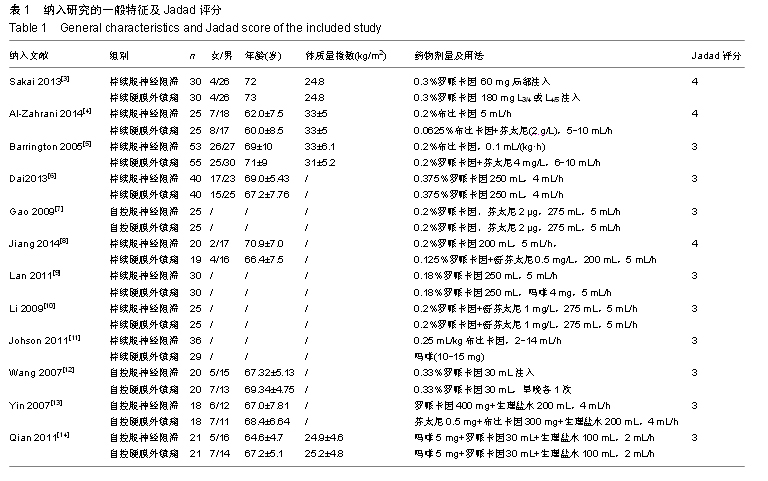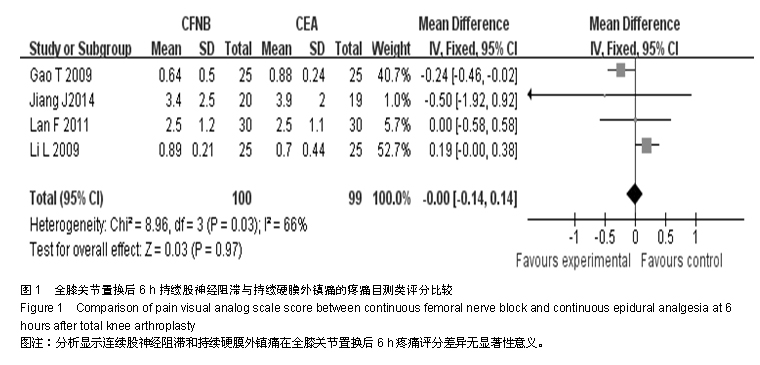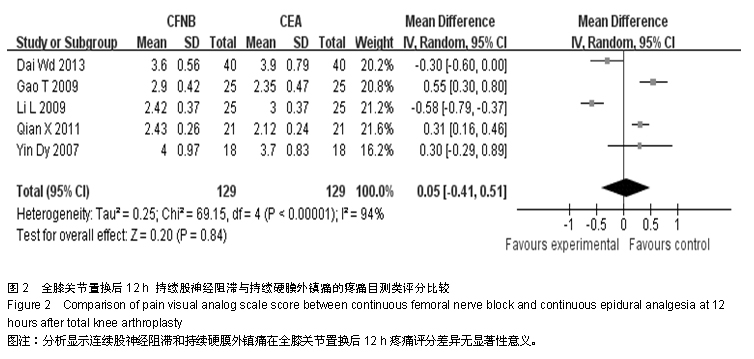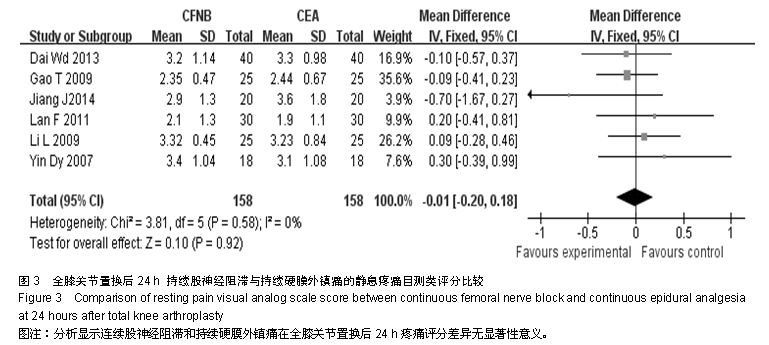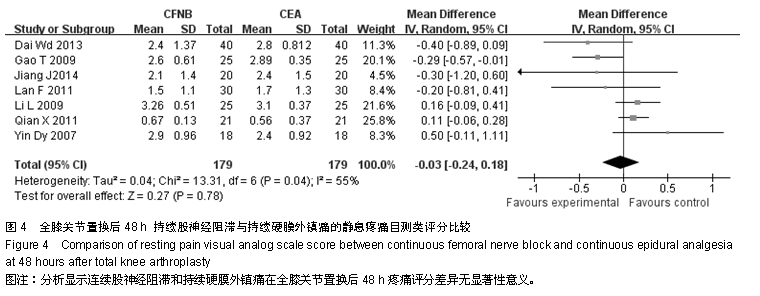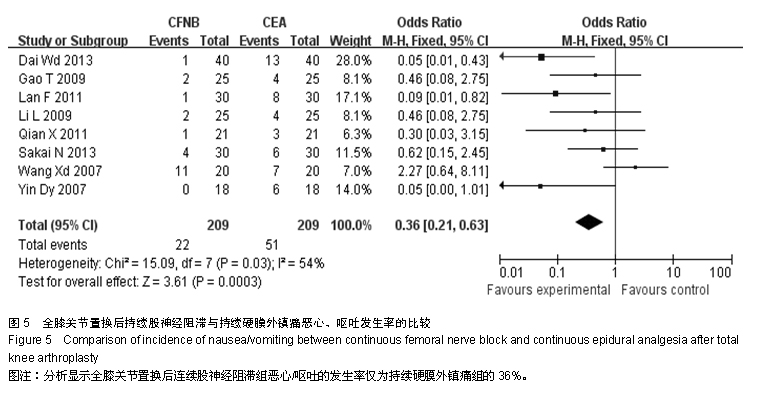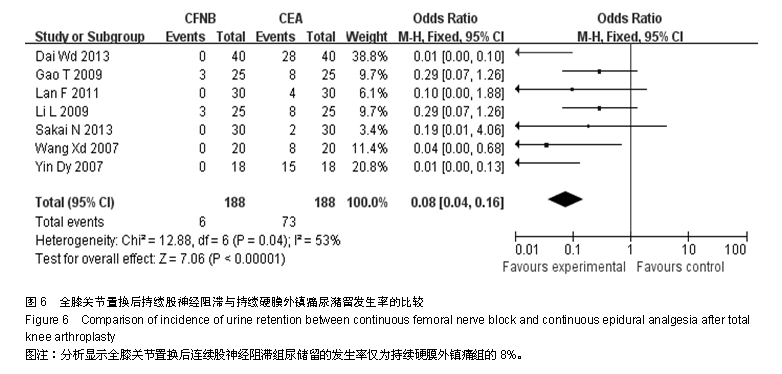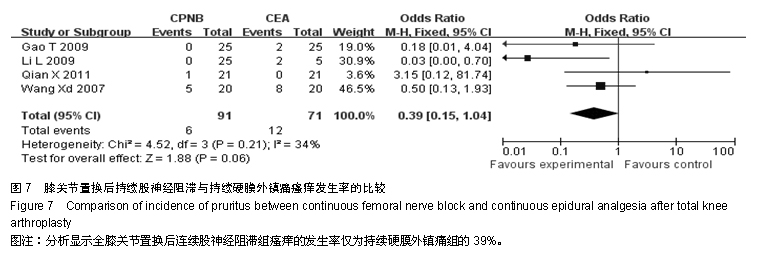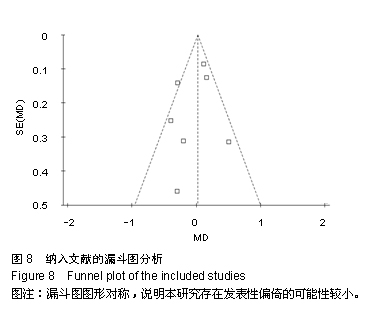中国组织工程研究 ›› 2015, Vol. 19 ›› Issue (35): 5728-5734.doi: 10.3969/j.issn.2095-4344.2015.35.028
• 骨与关节循证医学 evidence-based medicine of the bone and joint • 上一篇 下一篇
全膝关节置换后持续股神经阻滞与持续硬膜外镇痛的Meta分析
袁志民1,魏建仝2,温景荣1,杨 森1,全东和1
- 1甘南藏族自治州人民医院,甘肃省甘南州 747000;2兰州大学第一医院骨科,甘肃省兰州市 730000
A meta-analysis of countious femoral nerve block versus continuous epidural analgesia after total knee arthroplasty
Yuan Zhi-min1, Wei Jian-tong2, Wen Jing-rong1, Yang Sen1, Quan Dong-he1
- 1Gannan Tibetan Autonomous Prefecture People’s Hospital, Gannan 747000, Gansu Province, China; 2Department of Orthopedics, the First Hospital of Lanzhou University, Lanzhou 730000, Gansu Province, China
摘要:
背景:疼痛是全膝关节置换后阻碍患者早期恢复的重要原因,持续硬膜外镇痛和持续股神经阻滞均是全膝关节置换后镇痛的有效方法,但哪种方法镇痛效果更好且并发症较少一直存在争议。
目的:比较全膝关节置换后持续硬膜外镇痛与持续股神经阻滞的临床疗效及安全性。
方法:计算机检索Cochrane-Library、PubMed、EMBASE、Web of Science、CBM、CNKI、VIP、WanFang等数据库,同时检索学位论文、会议论文等,检索时间为各数据库建库至2014-10-01,纳入全膝关节置换后持续硬膜外镇痛与持续股神经阻滞的随机对照试验。采用Cochrane系统评价的方法进行评价,用RevMan 5.0软件进行统计学分析。
结果与结论:共纳入12篇随机对照试验,4篇英文,8篇中文,共680例患者,其中持续股神经阻滞组患者343例,持续硬膜外镇痛组患者337例。Meta分析结果显示,持续股神经阻滞组与持续硬膜外镇痛组在全膝关节置换后6,12,24,48 h的目测类比评分差异均无显著性意义;但与持续硬膜外镇痛组相比,持续股神经阻滞可减少恶心/呕吐(RR=0.36,95%CI:0.21-0.63,P=0.003)、尿潴留(RR=0.08,95%CI:0.04-0.16, P < 0.001)和头晕(RR=0.24,95%CI:0.06-0.99,P=0.05)的发生率。提示与硬膜外镇痛相比,全膝关节置换后持续股神经阻滞镇痛同样可以提供良好的镇痛效果,有利于患者早期功能恢复训练,且不良反应少,是一种安全、有效的镇痛方法。
中国组织工程研究杂志出版内容重点:人工关节;骨植入物;脊柱;骨折;内固定;数字化骨科;组织工程
中图分类号:
